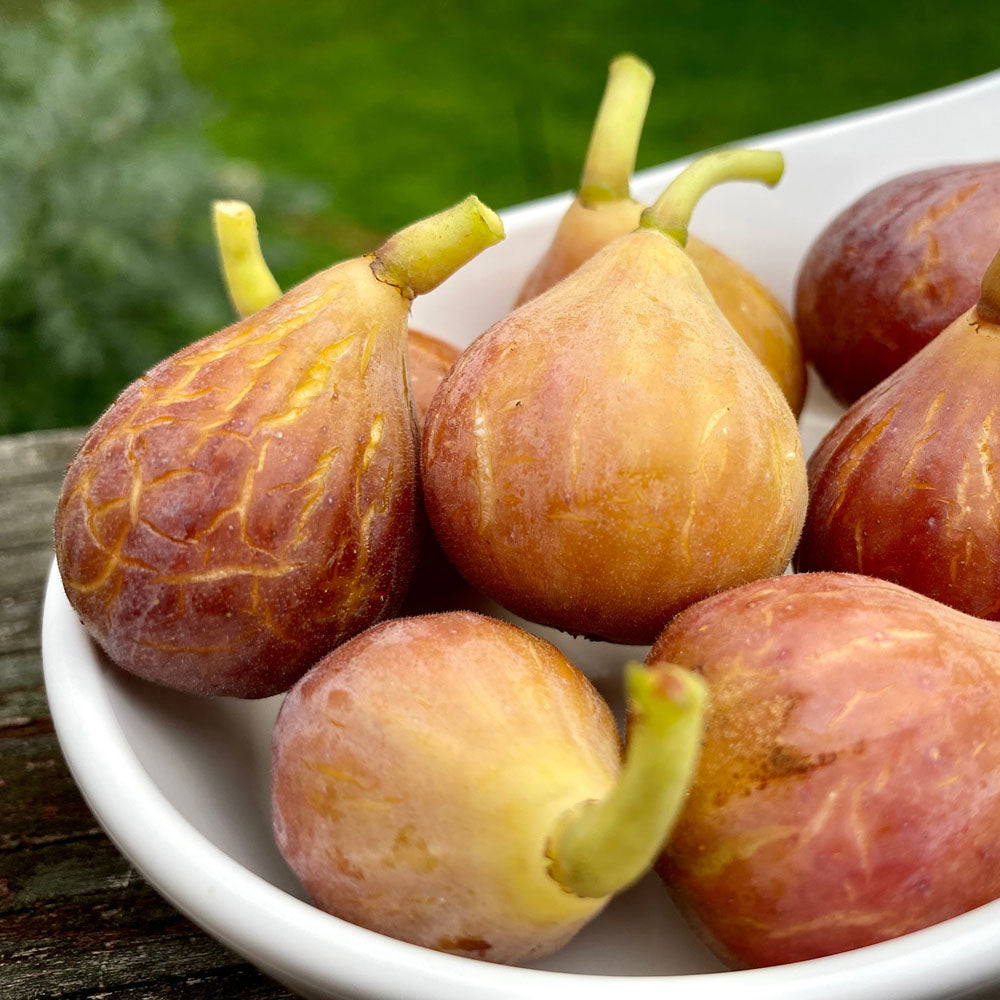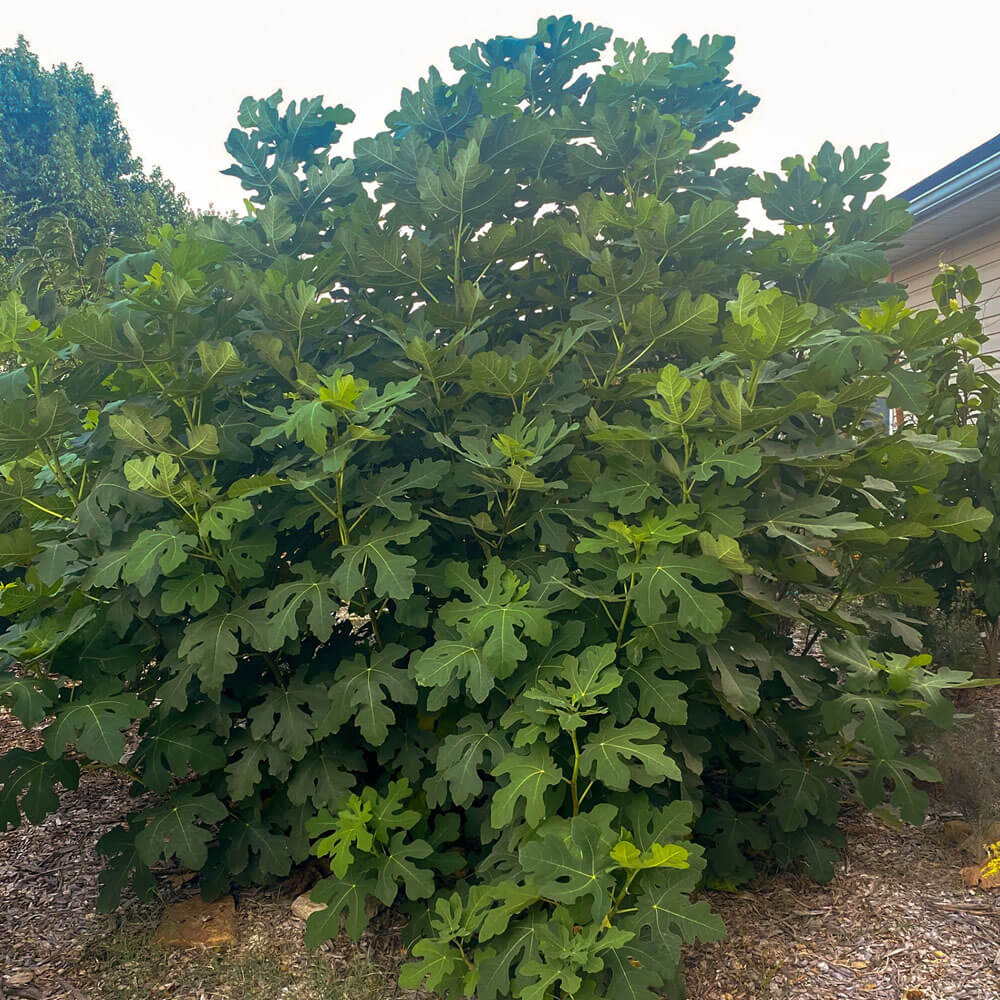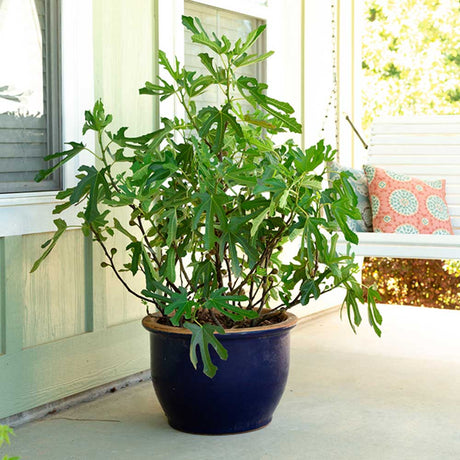Celeste Fig
Celeste Fig - 2.5 Gallon is backordered and will ship as soon as it is back in stock.
Couldn't load pickup availability
Description
Description
Elevate your garden experience with the Celeste Fig Tree, a true gem among fruit trees. Revered for its delectable, sweet fruit and striking appearance, the Celeste Fig, also known as the "Sugar Fig," is an essential addition to any home garden, balcony, or orchard.
This deciduous gem is characterized by its distinctive, palm-shaped leaves and a prolific yield of sweet, violet-brown figs that ripen in mid-summer, providing a delectable and visually pleasing harvest.
The Celeste Fig boasts a moderate growth rate, reaching a mature height of 10 to 15 feet with an equal spread, making it an excellent choice for small gardens, containers, or as an attractive focal point in larger landscapes.
Beyond its fruit, fig trees play a vital role in your garden's ecosystem. Its blossoms attract pollinators, contributing to a healthy, vibrant garden. The sight of birds and butterflies around the tree adds an extra layer of joy to your gardening experience.
Celeste Fig Tree Care
Adaptable to a variety of climates, it thrives remarkedly in USDA Hardiness Zones 6-9. The Celeste Fig Tree is renowned for its robustness. This resilience makes it a perfect choice for both novice and experienced gardeners.
In areas where winter temperatures dip below 15°F, some winter protection may be necessary. In areas where winter temperatures dip below 15°F, some winter protection may be necessary. Spread the mulch in a circle around the base of your tree, covering the root zone. Aim for a layer about 2-3 inches thick. This thickness is ideal for retaining moisture, suppressing weeds, and providing insulation.
Watering and Pruning Celeste Fig Tree
Moderation is key when it comes to watering. The Brown Turkey Fig prefers its soil to be moist but not waterlogged. Regular, moderate watering helps it establish a strong root system, especially in the first few years.
Pruning: The best time to prune your Celeste Fig Tree is in the late winter or early spring, just before new growth begins.
- Remove Dead or Diseased Wood: This helps prevent the spread of diseases and pests.
- Thin Out Crowded Branches: Thinning improves air circulation and sunlight penetration, essential for fruit development and tree health.
- Shape the Tree: Maintain a manageable size and shape, especially if you're growing the tree in a smaller space or container.
- Use clean, sharp pruning tools to make clean cuts.
- Prune branches at a 45-degree angle, about a quarter inch above a bud facing the outside of the tree. This encourages outward growth.
- Don't over-prune. Generally, removing about a third of the total growth annually is enough.
*The Celeste Fig is a deciduous/semi-evergreen plant and will go dormant during the winter months. When this plant is ordered during the Fall/Winter expect seasonal foliage decline(discoloration, spots, leaf drop) or the plant to arrive completely dormant.*
Check out some Southern Living Plant Collection Recipes featuring figs here:
Care & Use
Care & Use
Spacing Recommendations
Spacing Recommendations
-
Scientific Name
-
Hardiness Zone7, 8, 9, 10
-
Sun ExposureFull Sun
-
Evergreen or DeciduousDeciduous
-
FeaturesAttracts Birds / Butterflies, Disease Tolerant, Drought Tolerant, Dwarf, Heat Tolerant, Sun Loving
-
Feature ColorPurple, Green
-
UsesAccent, Container, Hedge, Mass Planting, Privacy Planting
-
Water NeedsMedium
-
Bloom SeasonNone
Growing Zones : 7, 8, 9, and 10











